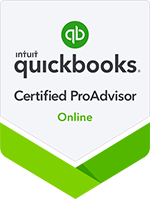One of the first decisions an entrepreneur needs to make when starting a new business is to choose the most tax-efficient entity structure for the new venture. In most cases, the new business will operate as a S corporation, partnership, sole proprietorship or C corporation. Entity structure determines, among other things, which assets are protected from creditors, and how business income is taxed. You’ll need to choose a legal entity type before you can register your new business with the state, although, from a tax standpoint, it is sometimes possible to switch from one taxable entity type to another down the road.
To help entrepreneurs and business owners understand the tax implications of their entity choices, this blog post summarizes the financial advantages and disadvantages by entity type.
S Corporations
S corporations avoid the double taxation drawback of C corps. S corporations allow profits and losses to be passed directly to owners’ personal income without being subjected to corporate tax rates.
Advantages
- S corporation business income is not subjected to self-employment or payroll tax, saving tax at Medicare (and potentially Social Security) rates.
- Income is taxed once, when earned, to owners – unlike in C corporations, when income is taxed twice – first to the corporation when earned and again to owners when distributed.
- S corporations can be owned by an individual or have up to 100 shareholders (with restrictions).
Disadvantages
- Dividend distributions must be paid proportionately to owners.
- Active owners must be on the payroll and be paid a ”reasonable salary.”
- Passive investors’ distributions are treated as “passive income,” which makes the earnings subject to Net Investment Income Tax.
- S corporations cannot be owned by foreign or groups of entities.
- Generally, S corporations must be owned by individuals rather than other entities. In some cases where a tax election is made, certain qualified trusts can own S corporation stock.
- Distributions of S corporation-owned property that has appreciated and depreciated above or below Fair Market Value (FMV) is treated as a FMV sale to the shareholder, creating taxable gain for S corporation owners.
- Owner salaries are not treated as Qualified Business Income for the purpose of Section 199A QBI deduction.
When S Corporations Make Sense
- When the company can meet all the qualifications of the corporate structure (100% U.S. shareholders, less than 100 total shareholders, all shareholders are eligible to own S corporation stock).
- When the company’s substantial income and self-employed payroll tax savings are enough to cover the costs of losing out on some QBI and can accommodate the administrative costs of filing additional income tax returns and payroll tax returns.
- When the company doesn’t own appreciating real estate and stocks that it plans on holding for the foreseeable future.
Partnerships
Partnerships represent the simplest structure for two or more investors to own a business together. Partnerships, like S corporations, avoid double taxation by passing income directly to partners. However, partnerships are subject to self-employment taxes.
Advantages
- Partnership income can be assigned a number of ways, and distributions don’t have to be proportionate.
- Income is taxed once, when earned, to owners – unlike C corporations, when income is taxed to the corporation when earned and again to owners when distributed.
- Partners receive basis from “recourse” loans, unlike in S corporations, where shareholders only receive basis from money personally loaned to the company.
- Partnerships can be owned by just about any type of partner, including corporations, other partnerships, trusts and foreign nationals.
- Partnerships have less stringent filing requirements, and fewer overhead costs to establish and maintain. Tax is very rarely assigned to a partnership. For example, Georgia’s net worth tax isn’t assessed to partnerships.
- Partnership owners don’t have to, and aren’t allowed to, pay themselves salaries, which eliminates service fees and other administrative costs associated with payroll.
- Partnerships can distribute appreciated property without generating a gain.
Disadvantages
- Partnership income (for active participants) is entirely taxed as self-employed income, and passive investors are subjected to Net Investment Income Tax.
- Partnership guaranteed payments are not eligible for the Qualified Business Income deduction and are subjected to self-employment taxation.
- Partnerships that have activity during a given tax year must file Form 1065 for that year, which adds administrative costs.
- Distributions don’t have to be proportionate which can cause partners to have disagreements. For example, when the majority partner receives a distribution that covers taxes due and the minority owner does not, the minority owner faces a tax shortage. In cases such as this, the minority owner generally has a fairly strong argument in court for forcing the majority owner to pay distributions that cover taxes.
When Partnerships Makes Sense
- When the company deals in real estate and earnings aren’t subject to self-employment tax.
- When the company has owners that aren’t eligible to own S corporation stock.
- When the company owns appreciating real estate and stocks that it plans on holding for the foreseeable future.
- When the company has multiple owners but doesn’t make enough profit to cover the costs of payroll service fees or missed QBI in an S corporation where owners are paid salaries.
Sole Proprietorships
In a sole proprietorship, the owner retains complete control over the entity’s operation.
Advantages
- Sole proprietorships aren’t required to track basis or prepare a balance sheet with tax returns.
- As with passthrough entities, income is taxed once, when earned, to the owner – unlike C corporations, when income is taxed to the corporation when earned and again to owners when distributed.
- Sole proprietorship income can be included for retirement plan contribution calculations.
- Because sole proprietorships do not file tax returns, the owner only has to file one return.
- Sole proprietors do not take salaries from their companies, saving administrative costs of payroll service providers and payroll tax return preparation.
- All sole proprietorship income is included in QBI calculations.
Disadvantages
- Sole proprietorship income is entirely taxed as self-employed income.
- Sole proprietorships can only have one owner.
When a Sole Proprietorship Makes Sense
- When a single-owner company doesn’t make enough to warrant electing to be taxed as an S corporation.
- When the company’s owner wants to avoid filing payroll or tax forms quarterly, or wants to consolidate tax filing into a single return.
- When the company’s owner generates the vast majority of the income and the owner isn’t comfortable pushing the limits of “reasonable salary,” and when the company generates QBI income.
C Corporations
A C corporation is a legal entity that’s separate from its owners. Such entities can make a profit, be taxed, and can be held legally liable.
Advantages
- C corporation business income is taxed at a flat, relatively low rate of 21%, meaning that companies that plan on reinvesting earnings can do so in the early stages of owning the company without huge tax bills.
- C corporations can be owned by any number of shareholders, and can have different classes of stock (with different dividend rights)
- C corporations can be owned by other corporations, and are eligible for a ‘dividends received deduction’, avoiding double-taxation between corporations.
- C corporations can have fiscal year-ends, unlike S corporations, which are generally limited to calendar year-ends.
Disadvantages
- C corporations must pay dividend distributions proportionately to owners of the same stock class.
- If owners actively participate in the business, they must be on payroll and be paid a
- “reasonable salary.”
- C corporations cannot deduct losses and are no longer eligible to carry them back to generate refunds in prior, profitable years (as of the TCJA’s enactment in 2018).
- Appreciated (or depreciated below FMV) property that’s distributed from the C corporation is treated as a sale at FMV to the owners, causing a taxable gain on distribution to the company, and a dividend to owners at FMV.
- Dividends to owners are taxed, generally, at capital gains rates, and are subject to NIIT (even if the owners actively participate).
When C Corporations Makes Sense
- When the company wants to eventually make a public stock offering and expand past 100 investors
- When the company wants or needs to have a fiscal year-end
- When the company is owned in-part by a self-directed IRA
- When the company wants to accumulate funds to reinvest and opts to take advantage of the relatively low C corporation tax rate up front
- When the company is owned by other C corporations, enough that the dividends-received deduction avoids double-taxation
Changing Your Company’s Corporate Entity
- It’s easier to go from a partnership or sole proprietorship to a corporation than vice versa.
- C corporations can elect to be taxed as S corporations, but C corporation-retained earnings are taxed at dividend rates when distributed.
Entrepreneurs need to carefully study these entity options to determine which one optimally balances legal protections and risks with benefits. In this blog post, we defined each entity type and offer our opinion about when each should be used. However, the information contained in the blog should be used as a preliminary guideline to narrow the options. Consultation with your RYBD advisor as well as securing a legal opinion is recommended prior to filing for the chosen entity.






